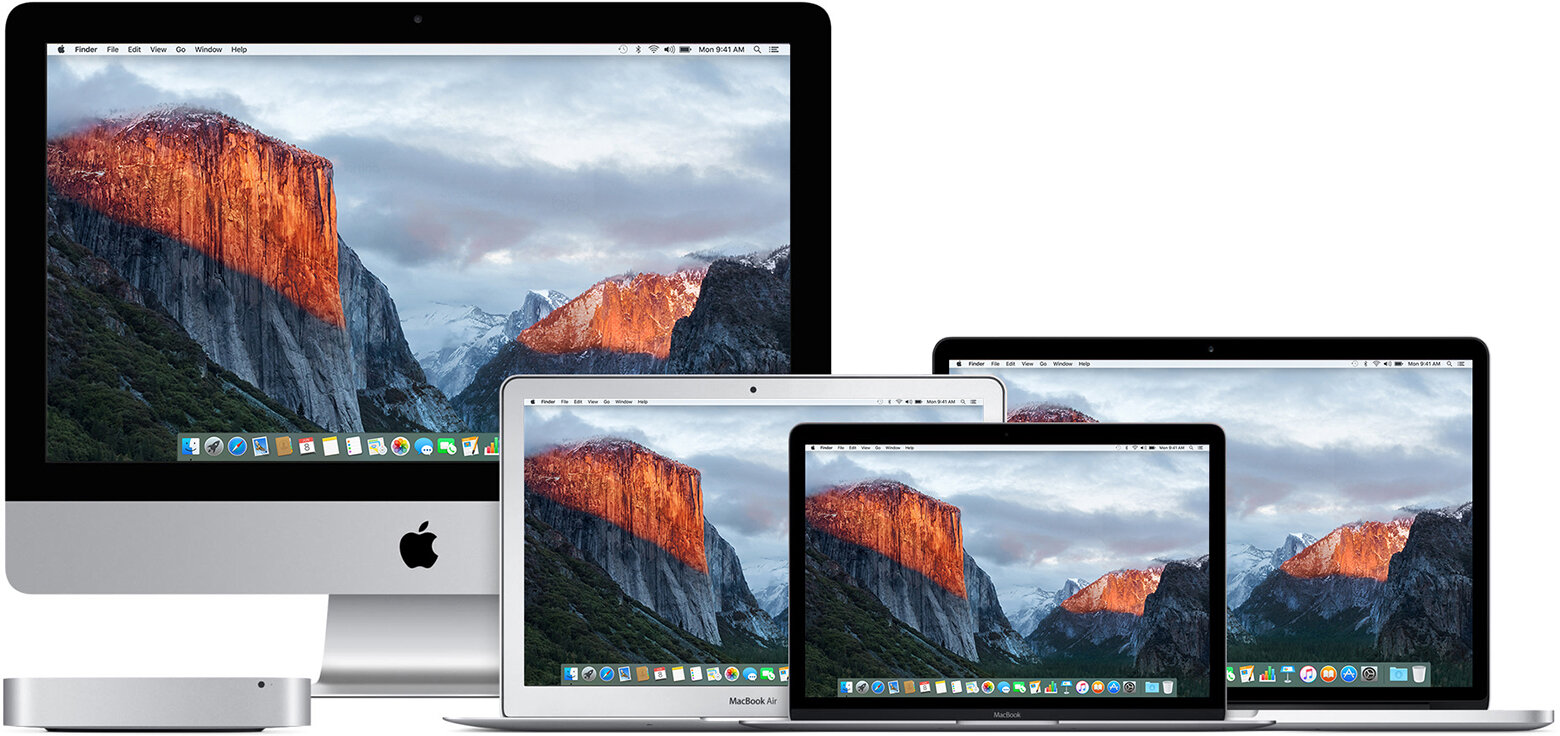These advanced steps are primarily for system administrators and others who are familiar with the command line. You don't need a bootable installer to upgrade macOS or reinstall macOS, but it can be useful when you want to install on multiple computers without downloading the installer each time.
What you need to create a bootable installer
- A USB flash drive or other secondary volume formatted as Mac OS Extended, with at least 14GB of available storage
- A downloaded installer for macOS Big Sur, Catalina, Mojave, High Sierra, or El Capitan
:max_bytes(150000):strip_icc()/CreateBootableElCap-56a5d54d3df78cf7728a1052.jpg)
Testing the El Capitan installer which has a published URL it will appear in the App Store, but if requested to download no longer says 'not valid for this Mac' it now says 'The requested version of macOS is not available'. Then, you clicked on the folder now in here, select the image file of Mac OS X El Capitan and click on the “Open” button. Select Mac OS X El Capitan ISO file. Within this step, you’re finished with the settings. Now is the time to make a digital machine to Mac OS X El Capitan. Consequently, you have to press on Create. The App Store (also known as the Mac App Store) is a digital distribution platform for macOS apps, created and maintained by Apple Inc. The platform was announced on October 20, 2010, at Apple's 'Back to the Mac' event. Apple began accepting app submissions from registered developers on November 3, 2010, in preparation for its launch. OS X El Capitan Download (Direct + Torrent) Apple announced OS X El Capitan Download links for all supported Macs. Apple introduced a new version of its desktop operating system, OS X, code-named OS X El Capitan (OS 10.11 version). Apple engineers focused on performance and interface of the new OS X, which is confirmed by its few innovations.
Download macOS
- Download: macOS Big Sur, macOS Catalina, macOS Mojave, or macOS High Sierra
These download to your Applications folder as an app named Install macOS [version name]. If the installer opens after downloading, quit it without continuing installation. To get the correct installer, download from a Mac that is using macOS Sierra 10.12.5 or later, or El Capitan 10.11.6. Enterprise administrators, please download from Apple, not a locally hosted software-update server. - Download: OS X El Capitan
This downloads as a disk image named InstallMacOSX.dmg. On a Mac that is compatible with El Capitan, open the disk image and run the installer within, named InstallMacOSX.pkg. It installs an app named Install OS X El Capitan into your Applications folder. You will create the bootable installer from this app, not from the disk image or .pkg installer.
Use the 'createinstallmedia' command in Terminal
- Connect the USB flash drive or other volume that you're using for the bootable installer.
- Open Terminal, which is in the Utilities folder of your Applications folder.
- Type or paste one of the following commands in Terminal. These assume that the installer is in your Applications folder, and MyVolume is the name of the USB flash drive or other volume you're using. If it has a different name, replace
MyVolumein these commands with the name of your volume.
Big Sur:*
Catalina:*
Mojave:*
High Sierra:*
El Capitan:
* If your Mac is using macOS Sierra or earlier, include the --applicationpath argument and installer path, similar to the way this is done in the command for El Capitan.
After typing the command:
- Press Return to enter the command.
- When prompted, type your administrator password and press Return again. Terminal doesn't show any characters as you type your password.
- When prompted, type
Yto confirm that you want to erase the volume, then press Return. Terminal shows the progress as the volume is erased. - After the volume is erased, you may see an alert that Terminal would like to access files on a removable volume. Click OK to allow the copy to proceed.
- When Terminal says that it's done, the volume will have the same name as the installer you downloaded, such as Install macOS Big Sur. You can now quit Terminal and eject the volume.
Use the bootable installer
Determine whether you're using a Mac with Apple silicon, then follow the appropriate steps:
Apple silicon
- Plug the bootable installer into a Mac that is connected to the internet and compatible with the version of macOS you're installing.
- Turn on your Mac and continue to hold the power button until you see the startup options window, which shows your bootable volumes.
- Select the volume containing the bootable installer, then click Continue.
- When the macOS installer opens, follow the onscreen instructions.
Intel processor
Download Mac El Capitan Installer
- Plug the bootable installer into a Mac that is connected to the internet and compatible with the version of macOS you're installing.
- Press and hold the Option (Alt) ⌥ key immediately after turning on or restarting your Mac.
- Release the Option key when you see a dark screen showing your bootable volumes.
- Select the volume containing the bootable installer. Then click the up arrow or press Return.
If you can't start up from the bootable installer, make sure that the External Boot setting in Startup Security Utility is set to allow booting from external media. - Choose your language, if prompted.
- Select Install macOS (or Install OS X) from the Utilities window, then click Continue and follow the onscreen instructions.
Learn more
A bootable installer doesn't download macOS from the internet, but it does require an internet connection to get firmware and other information specific to the Mac model.
For information about the createinstallmedia command and the arguments you can use with it, make sure that the macOS installer is in your Applications folder, then enter the appropriate path in Terminal:
Why do you need to download El Capitan through Terminal.
El Capitan is freely available from this link.

Here are the instructions.


Go to Section 4 and click on Download OS X El Capitan.
This downloads InstallMacOSX.dmg to your Downloads folder.
The next section can only be done on a mac that is capable of running El Capitan,
a mac that came preinstalled with an OS later than El Capitan will refuse to do the next bit.
When downloaded open to InstallMacOSX.pkg, double-click on
that and an installation window will open, this does not install El Capitan
but converts the InstallMacOSX.pkg to the Install OS X El Capitan.app which
you will find in your Applications folder, it should be 6.2GBs in size.
(If the installation window asks which disk you want to install to, you must pick
the disk that you are booted to at the time. Not any internal or external disk that
you want to eventually install El Capitan on, that is for later.)
Apple Download El Capitan Installer
To start the installation of El Capitan double click on the Install OS X El Capitan.app.
The copy of the install app self deletes after installing El Capitan, so make sure you keep a copy of the InstallMacOSX.dmg
Mac Os El Capitan Installer
if you need it in future, or you could just make a copy of the Install OS X El Capitan.app prior to installing and moving it to
an external drive for safe keeping. It is also possible to create a bootable USB installer disk using the Install OS X El Capitan.app
El Capitan Os X Download
in the Applications folder and the createinstallmedia command in the Terminal app.
Mac Sierra
Read the instructions here,
El Capitan Usb Installer
Sep 2, 2020 12:18 AM